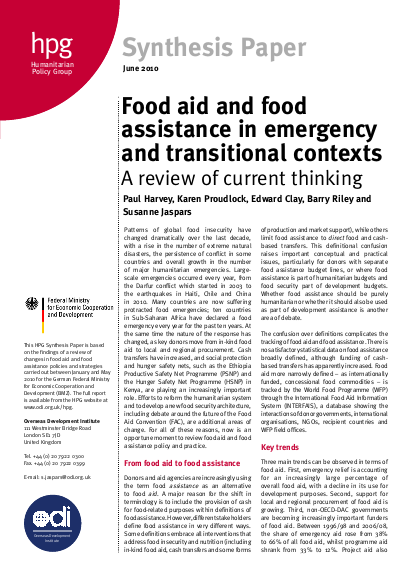
Patterns of global food insecurity have
changed dramatically over the last decade,
with a rise in the number of extreme natural
disasters, the persistence of conflict in some
countries and overall growth in the number
of major humanitarian emergencies. Largescale
emergencies occurred every year, from
the Darfur conflict which started in 2003 to
the earthquakes in Haiti, Chile and China
in 2010. Many countries are now suffering
protracted food emergencies; ten countries
in Sub-Saharan Africa have declared a food
emergency every year for the past ten years. At
the same time the nature of the response has
changed, as key donors move from in-kind food
aid to local and regional procurement. Cash
transfers have increased, and social protection
and hunger safety nets, such as the Ethiopia
Productive Safety Net Programme (PSNP) and
the Hunger Safety Net Programme (HSNP) in
Kenya, are playing an increasingly important
role. Efforts to reform the humanitarian system
and to develop a new food security architecture,
including debate around the future of the Food
Aid Convention (FAC), are additional areas of
change. For all of these reasons, now is an
opportune moment to review food aid and food
assistance policy and practice.
